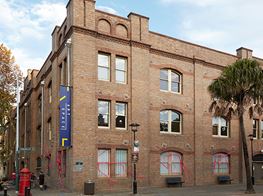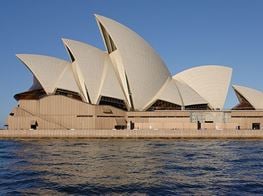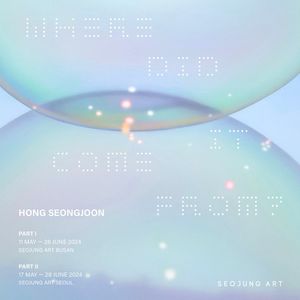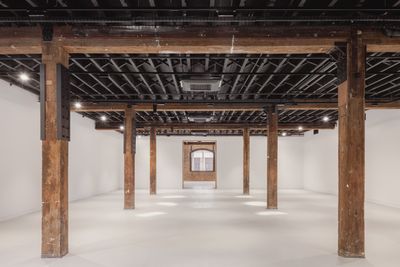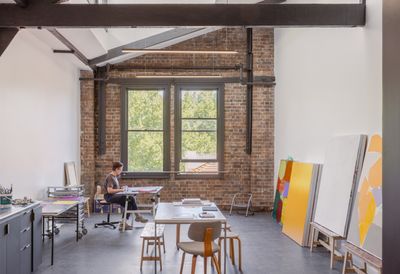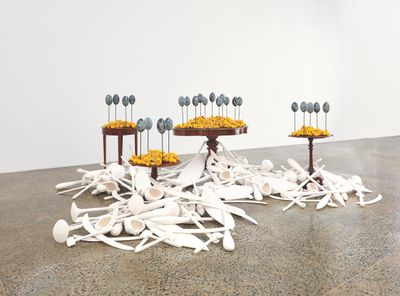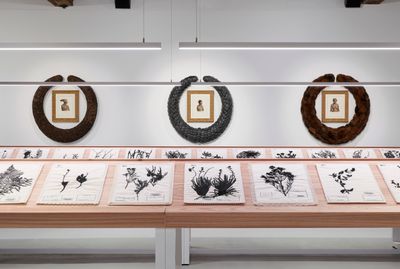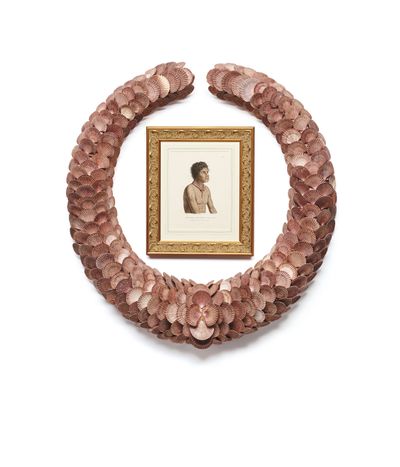Sydney's Artspace Returns After $19.2m Refit
Executive Director Alexie Glass-Kantor introduces the institution's transformation—including an extra floor and a new banner commission—ahead of the reopening on 15 December.
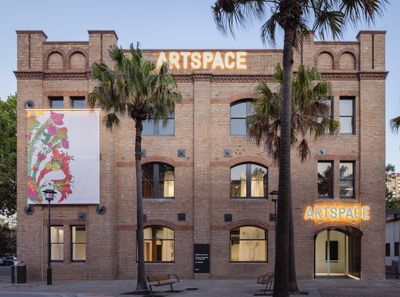
Exterior of Artspace in The Gunnery, featuring a new commission by Dennis Golding, Colouring Memory (2023). Photo: Katherine Lu.
Artspace in Sydney turns 40 this year, and what a celebration they have planned. Where previously they'd occupied just two floors of what was a leaky Gunnery building, after two years of renovations costing AU $19.2 million (US $12.6 million) they will reopen across all three storeys in a building that's been designed to adapt to whatever may come during their new 35-year-lease.
Australian curator Alexie Glass-Kantor has led Artspace since 2014, where she has organised ambitious collaborations with other institutions and overseen a switch from paid to free artist studios. She has also served as curator of Art Basel Hong Kong's Encounters sector since 2015.
She introduced the new Artspace, including its inaugural exhibition by Jonathan Jones and the Banner Series, which launches with a commission by Dennis Golding.
What is Artspace, and how does it function in the broader Australian art context?
Artspace was established in 1983 by artists to support artists. We are a non-collecting, public-facing institution that supports risk, experimentation, and critical thinking through the lens of visual culture. The artists who established Artspace envisioned an alternative to commercial galleries and national institutions, with a focus on gender equity, cultural diversity, Aboriginal and First Nations leadership, as well as emerging technologies.
The building we're in now is The Gunnery, where we've been for 30 years. It has been around since the late 1800s and was used for storage before being requisitioned by the Government during the Second World War. It was later abandoned and became an artists' squat.
But the building was leaking, it wasn't fit for purpose, and it didn't have universal access, so we had prepared a business case which the New South Wales Government approved as The Gunnery Transformation Project in 2019.
We moved out in mid-2021 during a four-month Covid-19 lockdown and have just returned to the building. The entrance has been reorientated to Forbes Street, we have a new double-height void when you come in, a bespoke space to house our 40-year archive, and a new 250-square-metre space with a sprung floor for live art, performance, public programmes, and events.
Our brief to architects DunnHillam was: build us a ute, not a Porsche. We want a high-functioning, multi-platform, agile programming institution. We want it to be a 21st-century Kunsthalle. We want it also to be able to be changed and adapted by future generations.
With the space growing, will you also be increasing staffing?
Next year we'll be reviewing the Board and organisational structure to ensure Artspace is resilient for future generations. We have doubled the staff in the past 10 years, and in the next 10 years it will probably double again.
You've worked so hard writing business proposals and raising funds, have you had time to develop Artspace's programming?
I love art. I went to art school and I made terrible art but I spoke about its horrors very well. I always wanted to be a curator who worked with commissioning living artists. I'm interested in that space where cultural production sits in line with social, cultural and political ideas of transformation.
For myself, Senior Curator Talia Linz, Deputy Director Michelle Newton and other staff here, we see a lot of art. So it's not an institution where you're like, today I'm going to curate and tomorrow I'm going to fundraise. You just do everything in tandem.
For the reopening, Jonathan Jones will be the 10th in a series of co-commissioned exhibitions we've done with 17 peer institutions over the past 10 years. It's an expanded project that's been in development since 2018 that we co-commissioned with the Palais de Tokyo. It will tour four venues around Australia as well.
That project, untitled (transcriptions of country) looks at Nicolas Baudin's circumnavigation of Australia and his collection of Indigenous plants, portraits of Aboriginal people, recording of language, and a collection of objects that went back to France. It's a really expansive and encyclopaedic exhibition that includes 308 embroideries that transcribe the plant specimens collected in Sydney, a set of wreaths and historical portraits, a moving image work, soundscape, and planting installation.
What can you tell us about the Banner Project and the inaugural commission by Dennis Golding?
The City of Sydney really wanted us to do a permanent installation but we're not a collecting institution, so a responsive series of commissions felt more relevant. At the time the squatters occupied The Gunnery, material such as fabric banners and paste-ups, spray paintings and agit-prop pamphlets were very common, so we took inspiration from this history and proposed two large banners that are situated on either side of the front corner of the building.
They can be seen from the city by a million people a day, even from out on the Harbour. The Banner Series includes three artist commissions each year.
Dennis Golding has had a relationship with Artspace since he visited us as a curious art student. When he graduated, he applied for a studio here with his collaborator Carmen Glynn-Braun. He went on to win the NSW Visual Arts Emerging Fellowship in 2020, which Artspace presents, becoming the first Aboriginal artist in 100 years to do so.
Dennis grew up in social housing in the suburb of Redfern, which has undergone significant gentrification that has forced many Indigenous families to relocate from the area. His banners look at the iron lacework common to many terrace houses that are vestiges of Australia's colonial history. He has appropriated the form and refashioned it as a floral motif alive with Indigenous Australian plants. So one corner is the metal lacework itself and the other side is his contemporary interpretation. —[O]

